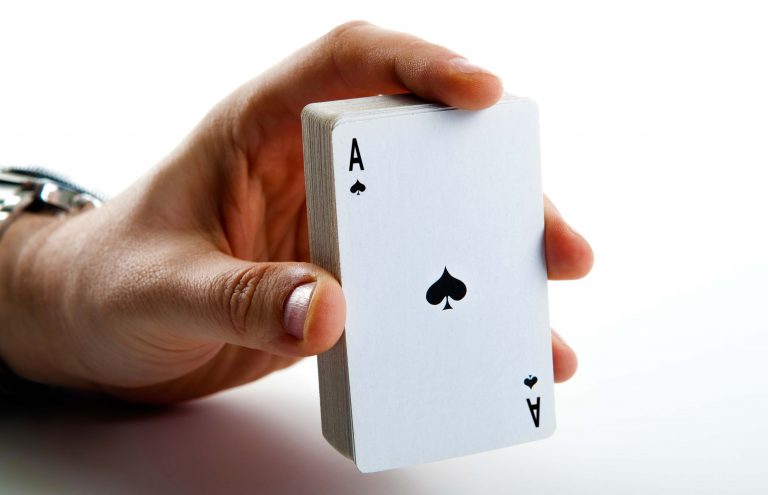Different Types of Patents
If you’re a company or inventor, knowing the different types of patents is essential to securing the right type of intellectual property protection for your idea or invention. The United States Patent and Trademark Office (USPTO) offers inventor three types of patent with which they can protect their inventions. The types of patents include: utility patents, design patents, and plant patents. We will cover these three types of patents in detail below.
The law grants inventors different types of patents depending on the subject matter of the invention. Learning about the different types of patent applications will help you better navigate intellectual property law to protect your idea or invention.
What Are the Different Types of Patents?
We will now cover all of the different types of patents that you can apply for at the U.S Patent and Trademark Office (USPTO).
- Utility Patents. Utility Patents are the most type of applied for patents, making up more than 90% of applied for patents. Utility patents protect any new and useful machine, process, manufacture, or composition of matter, or an improvement of them. Utility patents last for 20 years from the filing date of your patent application.
- Software Patents. Software patents fall under utility patents and they are used by developers to protect new aspects of their software. Software patents offer developers broader protection than copyright law and so many developers opt for patent protection. That said, software patents are complex so finding an experienced software patent attorney is in your best interest and could save you time and money down the road.
- Business Method Patents. This type of patent involves patenting a business method that is combined with technology, resulting in a new way of doing business. Obtaining a business method patent is quite tricky so having a patent attorney who can navigate the muddy waters of business method patents will save you time and money and will give you a better chance of getting your patent application approved.
- Software Patents. Software patents fall under utility patents and they are used by developers to protect new aspects of their software. Software patents offer developers broader protection than copyright law and so many developers opt for patent protection. That said, software patents are complex so finding an experienced software patent attorney is in your best interest and could save you time and money down the road.
- Design Patents. Design patents are used to protect the ornamental design of a functional item. Design patents can be used to protect items like Jewelry, beverage containers, and furniture. Design patents offer protection that’s similar to trade dress protection under trademark law. To protect your design you have to file a design patent application that illustrates the specific design that you’re seeking to protect. Design patents offer 15 years of protection that starts from the day your design patent application is granted.
- Plant Patents. The USPTO allows inventors to obtain plant patents to protect newly invented strains of asexually reproduced plants. Asexual reproduction means that an inventor can reproduce the plant without the use of any seeds. Agriculturists do this by cutting or grafting parts of the plant. So, why does this USPTO have this requirement? The asexual reproduction requirement proves that the inventor can duplicate the plant. Plant patents last for 20 years from the filing date of a plant patent application.
- Reissue Patent. Reissue patents are patent that are issued by the USPTO to correct a significant error in an already granted patent. Reissued patent can be issued for utility, design, or plant patents. Just know that reissue patents do not extend the term of your original patent because they only correct errors in the original patent.
Just to recap, the most common types of patents include utility patents (how a product functions), design patents (how a product looks), and plant patents (new species of plants). Other types of patents include provisional patents and we will cover these below.
Provisional vs Nonprovisional Patent Application
To obtain a patent, an inventor must first file a patent application with the USPTO. If your invention falls under utility patents, you will find two types of patent applications: a provisional patent application and a non-provisional patent application.
Provisional Patent Application
A provisional patent application is often filed with the patent office instead of a (regular) nonprovisional patent application because it requires less work and it’s also less expensive than preparing and filing a nonprovisional application. Provisional patents help inventors secure an early filing date, but they can never turn into a patent.
This application is often used when an inventor has a great idea or invention and wants to secure a priority date even though he is not 100% ready to file a complete patent application because he is still working on the invention.
So, why would you rush to the USPTO to file a provisional patent application? The United States has what is known as a first inventor to file system, which basically means that the first inventor to file a patent application will be issued a patent if he can satisfy all of the patent requirements.
Assuming you satisfy all of the requirements and you receive a patent, you’ll be able to restrict others from using, selling, or otherwise profiting from your invention.
So, what do provisional patent applications require? Provisional patent applications only require you to provide a description and drawing(s) of an invention, but do not require formal patent claims, declarations, or informational disclosure statements.
Provisional patent application are not examined by the patent office, instead they function as a placeholder in time to secure an early filing date for your invention.
Non Provisional Patent Application
The non provisional patent application is a regular utility patent application. It’s the application that you file for the USPTO to review and hopefully grant your patent application.
Unlike the provisional patent application, a non provisional patent application can mature into a patent. While the provisional patent application is easy to fill out and doesn’t have too many requirements, the non provisional is quite the opposite, it long and there are a lot of rules that you have to follow, breaking even one of the rules can get your application rejected by the USPTO.
Since non provisional patent applications are reviewed, they must follow a certain format and they must makes at least one claim. Non provisional applications are typically written by patent attorneys who know how to adhere the USPTO’s strict format.
Which One Should you File? (Provisional vs Non-provisional)
If you need more time to perfect your invention, you can start out by filing a provisional patent, this should give you an extra year to decide if you want to file a non provisional (regular) utility patent.
For example, you have developed a new breaking system for bikes that offers better breaking than conventional bike breaks. You make prototypes and find out that they can stop bikes safely in half the distance of traditional bike brakes.
As you apply for a patent, you should consider all of the ways that you can protect your new invention. You can file a utility patent to protect the breaks themselves. You can file a design patent to protect the distinctive look of your improved breaking system. You can even file a provisional patent application to give yourself some time to file your utility patent application, as well as to learn more about your invention and the market for your patent.
Why Should you Know the Different Types of Patents?
If you want to protect your invention, you need to know the different types of available protection. Patents are a form of intellectual property (IP) that encourage inventors to create new products by giving them a monopoly over their inventions for a limited period of time.
Since the USPTO has different types of patents, you need to know what protection to seek for your invention. If you file a design patent application to protect a functional aspect of your invention, your patent application will be rejected and the money you paid to file your application will be lost. So, doing some research before filing your application will save you tons of money and time.
Defensive Publication
Defensive publication, also known as defensive disclosure, is an intellectual property (IP) strategy that is used to disclose an invention to the public to prevent others from patenting a product, process, or invention.
Those engaging in defensive publication disclose a description and/or drawing of a product or invention so that it enters the public domain and becomes prior art, preventing anyone from patenting the disclosed invention.
Disclosing an invention that is otherwise patentable defeats the novelty of subsequent patent applications. This is so because subsequent patent applications will have nothing new to disclose to the public since the invention has already been disclosed to the public, defeating the novelty requirement that patent applications must satisfy.
Some companies use defensive publication because patenting their invention is expensive, often costing thousands of dollars, depending on the complexity of the invention.
The benefit of defensive publishing is that the content becomes public in a matter of hours or days, rather than years required to patent an invention.
For a few hundred dollars, publishing a technical disclosure will help you:
- Block competitors from obtaining a patent over your invention
- Reduce the cost of filing and prosecuting a patent application
- Secure the freedom to operate and use your patent
Benefits of Utility Patents
Although utility patents are more expensive than design patents, they offer superior protection for your idea or invention. Here are some of the benefits of utility patents:
- Protect the function aspects of your invention
- Provide broad protection, making it difficult for a competitor to copy your invention without committing patent infringement
- Capable of protecting many variations of your product all with a single patent
Benefits of Design Patents
Design patents are the least common type of patent filed with the USPTO, but they are easier to get and cheaper than utility patents. Design patents have some benefits that include:
- Design patents protect the appearance of your product
- They are cheaper to get than utility patents
- You can get them faster than utility patent as they typically take 1 to 2 years.
When Should you File Both a Design Patent Application and a Utility Patent Application?
If you invented something that has unique function coupled with a unique appearance, you should consider protecting your invention by filing both a utility patent application and a design patent application. Once you’ve filed your applications, you can notate that your invention is “patent pending.” Also, you should consider contacting an attorney to help you with filing your patent application, depending on the complexity of your invention. This could save you time and money.
When Should You File for a Patent?
If you’ve invented something new and you want to make money from it, you should protect it with a patent. If you decide that patent protection is something that you want, you should file your patent with the USPTO as soon as possible so that you’re the first to file.
The USPTO has a first to file standard that gives priority to the first person to file the patent for the invention. So, if you invented something first, and someone later invents the same thing, if they file before you, they will get the patent and will be able to restrict you from using, selling, or profiting from the invention.
Just remember that the patent office works very slowly. Applications tend to anywhere from 18 to 30 months to approve applications, so the earlier you file, the sooner you can commercialize and profit from your invention.
When Should you Not File for a Patent?
If you’re invention isn’t new or can’t be commercialized, don’t waste your time and money on obtaining a patent.
We know that many of you have great ideas and inventions, but it only makes sense to patent it if you know that you can commercialize it and make a profit from it.
Many great ideas never see the success they deserve, so if you feel that you can’t successfully sell and profit from your invention, don’t waste time and money that you’ll never get back.
Also, it’s always a good idea to perform a patent search before filing a patent. People sometimes they think that they’ve invented something new, only to find out that someone else had invented the same or something similar to their invention. You can perform this search on your own, but we recommend hiring an experienced patent attorney to do the research for you.
Examples of the Different Types of Patents
- Utility Patents
- Getting a patent over a new breaking system for bicycles. Utility patents last for 20 years from the date you first filed your patent application
- Getting a patent over a new breaking system for bicycles. Utility patents last for 20 years from the date you first filed your patent application
- Software Patents
- Amazon’s 1 Click to Buy Button. Software patents last for 20 years from the date you first filed your software patent application
- Amazon’s 1 Click to Buy Button. Software patents last for 20 years from the date you first filed your software patent application
- Design Patents
- Coca Cola Design patent for the appearance of its Coke Bottles. Design patents last for 15 years from when your design patent is granted.
- Coca Cola Design patent for the appearance of its Coke Bottles. Design patents last for 15 years from when your design patent is granted.
- Plant Patents
- A farmer who creates a new species of mangoes. Plant patents last for 20 years from the date you first filed your plant patent
Information Required for the Different Types of Patents
The USPTO requires inventors seeking patent protection to disclose certain information about their invention. Here are the typical things you’ll need to fill out in any patent application.
- Title. You will need to find common words associated with your patent. These words should include words that consumers would recognize as relevant to your invention.
- Claim. You are required to state at least one claim of your invention. The claim can be the invention’s purpose or unique function, or design.
- Cross Reference. This document claims priority for your patent. You must list current patent applications.
- Disclosure. If your invention was sponsored by anyone or the Government, you must disclose that in the disclosure section of your patent application.
- Background. You should give a simple explanation of how you invented the product or process you’re seeking patent protection for.
- Figures. You must label the drawings included in your application with figure numbers. Using a document, label each figure with simple and easy to understand wording.
- Abstract. You can offer a document that summarizes your invention
Filing Your Patent Application
Your invention will dictate the type of patent you need to file for. You have to choose between the different types of patents: utility patent, design patent, or plant patent. Once you’ve chosen the appropriate patent, you’ll need to fill out the corresponding patent application on the USPTO’s website. If you feel comfortable doing so on your own, you can fill out the application yourself, however if you need assistance, contacting an experienced attorney to navigate the different types of patents is another great option.








